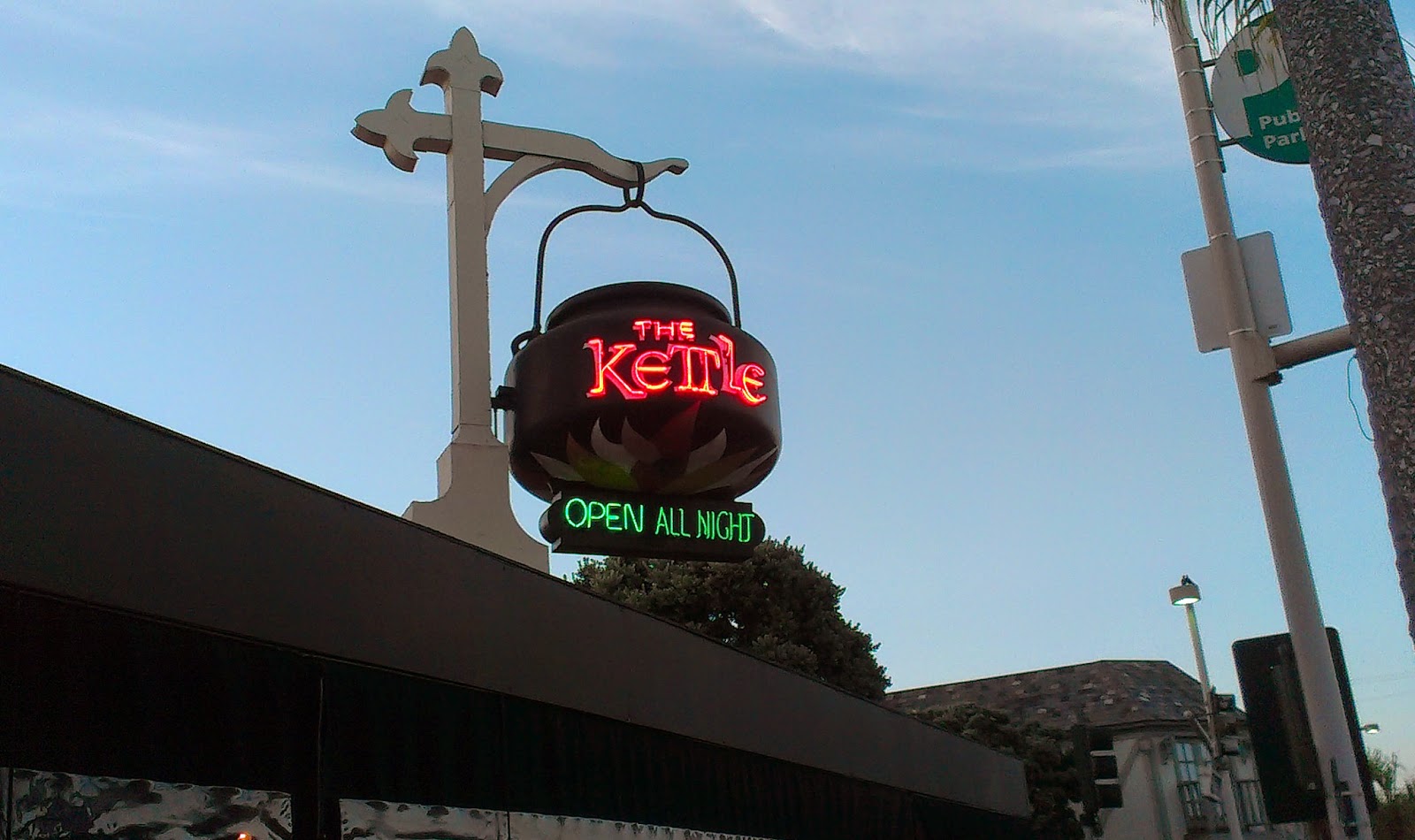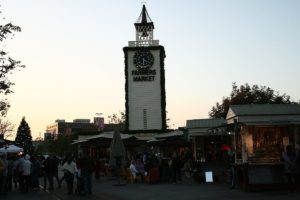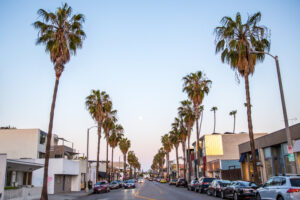Operating 24 hours a day since 1973, ‘The Kettle’ has become an iconic landmark at Manhattan Beach. It stands as one of the oldest food establishments in the city. The restaurant is nestled in the heart of the city’s shopping district, two blocks south of the civic center and just three blocks east of the Manhattan Beach Pier. Beyond its dining space and common areas, The Kettle is renowned for its programmatic or mimetic signage: a striking giant kettle prominently situated on the restaurant’s rooftop.
The Kettle has been owned and operated by three generations of the Simms family since 1976, although it was inaugurated three years earlier by a family associate, Wally Botello. He constructed the restaurant on the site of a former Atlantic Richfield gas station. It was the first 24-hour restaurant in Manhattan Beach and today remains one of the few in South Bay that operates around the clock.
Arthur J. Simms (1918-2000) purchased The Kettle from Botello and took over on Christmas Day of 1975. His prior restaurant experience stemmed from Hollywood. After relocating to the region for work in the 1940s, he managed the commissary at MGM studios. Later, he acquired a Ben Frank’s cafeteria in Los Angeles and built two more in Hollywood before coming to Manhattan Beach. His sons Scott, Tom, and Greg joined him at The Kettle, and today the third generation of the Simms family also helps run the restaurant.
The establishment features a covered patio, set within a brick and stone wall that wraps around two sides of the building from the corner. Leaded glass windows line the restaurant walls overlooking the patio. The interior showcases the work of California designer Evelyn Ackerman.
However, undoubtedly one of the restaurant’s most distinctive elements is its programmatic signage in the form of a giant kettle suspended from a chimney crane, complete with flames painted along its bottom and neon letters spelling out ‘The Kettle’. While it’s a post-1970s example, it continues the tradition of programmatic architecture and signage that first became popular in the Los Angeles area in the 1920s and 30s. Savvy business operators created buildings or signage in the shape of giant objects that attracted passing motorists, with designs reflecting a business’s identity or the type of merchandise sold inside.
The image of a kettle and the open-hearth cooking is a motif from the American colonial period. Colonial design motifs enjoyed widespread popularity for several decades of the twentieth century, even among roadside restaurants and motels, for their connotations of hospitality.
They boast an extensive menu, with options to suit all tastes. The food is excellent, and the prices are quite reasonable.



